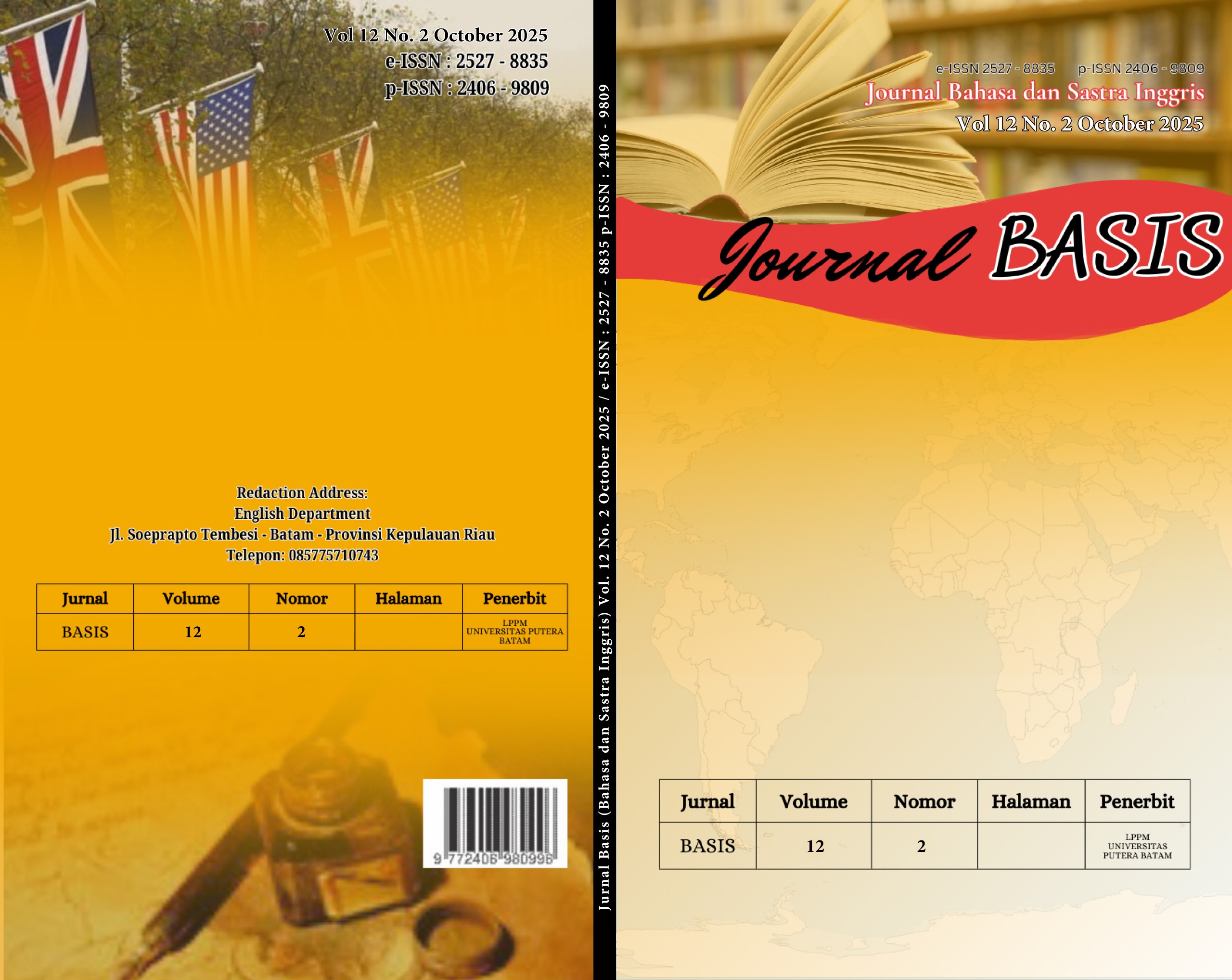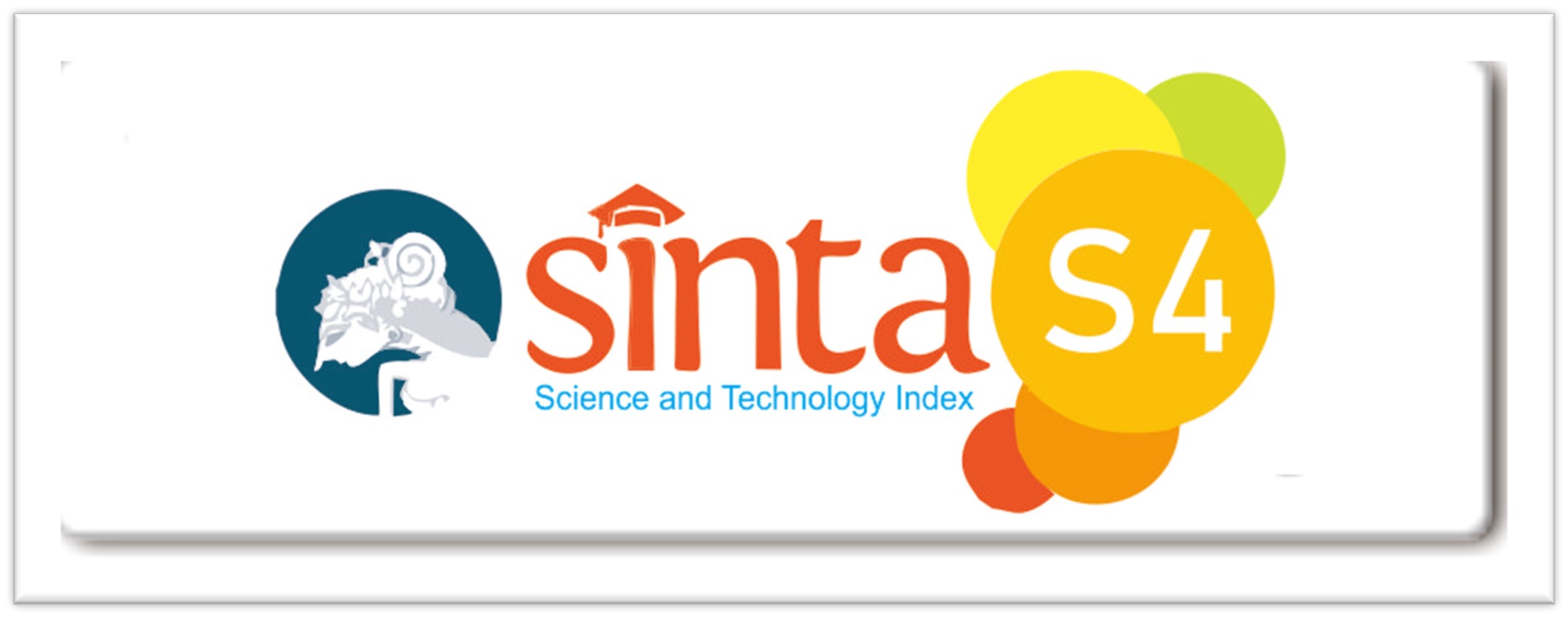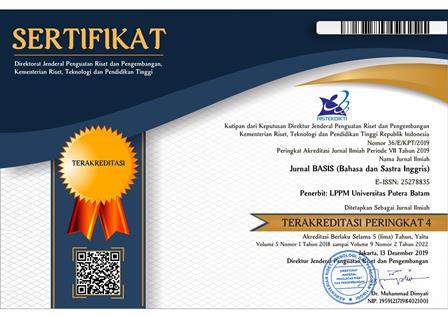TEACHING STRATEGIES AND THEIR IMPACT ON EFL LEARNERS’ SPEAKING SKILLS: A CASE STUDY IN AN INDONESIAN ISLAMIC SCHOOL
DOI:
https://doi.org/10.33884/basisupb.v12i2.10819Keywords:
EFL Learners, Impact, Speaking, Teaching StrategiesAbstract
EFL learners make efforts to learn speaking skills in order to communicate in the global world. Through speaking, they are able to express their feelings and thoughts. However, there are always some challenges faced by ELF learners in learning speaking, so that teachers play critical functions as they are most commonly used as prompters as well as feedback providers to motivate them to speak. The purposes of this study were to analyze the teacher’s strategies in teaching speaking to 29 students at SDIT Darul Qur'an Mulia, as well as to recognize the impacts of the strategies implemented. The writers applied qualitative research, and the case study was chosen as the design of study. To collect data, the writers conducted classroom observations to find out the teaching speaking strategies used in classroom teaching. Then, the writers conducted interview to discover the strategies’ impacts on students speaking skills by delivering questions to the teacher. As a result, there were seven types of strategies implemented to teach speaking, namely live listening, writing task, task repetition, drilling, dialogue, discussion, and conversation strategies. Further, based on the interview results, students showed positive responses to the implemented speaking strategies. Moreover, the impacts of the teacher's speaking strategies discovered include encouraging students to think positively, get more involved in learning, improve their speaking skills, and enjoy the learning process more. Therefore, the results suggest that incorporating interactive and student-centered approaches should be considered in teacher training and curriculum development to enhance students’ speaking skills.
References
Alinda, M. (2019). Implementing communicative approach in teaching speaking. Konstruktivisme: Jurnal Pendidikan dan Pembelajaran, 11(2), 154 162. https://doi.org/10.35457/konstruk.v11i2.725
Anjaniputra, A. G. (2013). Teacher’s strategies in teaching speaking to students at secondary level. Journal of English and Education, 1(2), 1-8.
Bozorgian, H., & Kanani, S. M. (2017). Task repetition on accuracy and fluency: EFL learners’ speaking skill. International Journal of English Language and Literature Studies, 6(2), 42–53. https://doi.org/10.18488/journal.23.2017.62.42.53
Brown, D. H. (2001). Teaching by Principles: An Interactive Approach to Language Pedagogy. New York: Addisiom Wesley Longman.
Clarita, Z. M., & Hidayat, N. (2020). An analysis of students’ speaking difficulties at eighth grade SMPIT At Taqwa Surabaya. IJET (Indonesian Journal of English Teaching), 9(1), 108 117.
Ellis, R. (2003). Task-based language learning and teaching. Oxford University Press.
Field, J. (2008). Listening in the language classroom. Cambridge University Press.
Hakim, M. A. R. (2017). Teachers’ Strategies in Teaching Speaking Lessons on Introvert Students in Madrasah Aliyah (MA) Ja-alHaq Bengkulu. Madania: Jurnal Kajian Keislaman, 21(1), 23-30.
Harmer, J. (2007). The practice of English language teaching (4th ed.). Harlow, England: Pearson Longman.
Heriansyah, H. (2012). Speaking problems faced by the English department students at Syiah Kuala University. Lingua Didaktika: Jurnal Bahasa dan Pembelajaran Bahasa, 6(1), 37-44
Hughes, R. (2002). Teaching and researching speaking. New York: Pearson Education
Huriyah, L., Nuriawarti, F. A., Zahro, S. F., & Hardini, W. A. (2020). Peer dialogue as an effective way for teaching speaking: Indonesian EFL students’ voices. In Proceedings of the International Conference on English Language Teaching (ICONELT 2019) (pp. 235–237). Atlantis Press. https://doi.org/10.2991/assehr.k.200427.046
Kusumawati, F. P. (2017). Developing English Learning Material for Speaking Skill Based on ADDIE. Premise: Journal of English Education and Applied Linguistics, 6(1), 29-41. http://dx.doi.org/10.24127/pj.v6i1.805
Leong, L. M., & Ahmadi, S. M. (2017). An Analysis of Factors Influencing Learners ‘English Speaking Skill.
Mahmud, M., & Ulya, S. (2021). The Effect of Direct Method in Teaching Speaking Skill: Quantitative Method. JOURNEY (Journal of English Language and Pedagogy), 1(1), 88–102. Retrieved from https://ejournal.iaida.ac.id/index.php/Journey/article/view/836
Mansyur, M., Syamsuddin, M. R., & Aeni, N. (2024). Improving students’ speaking skill through communicative approach: Discussion. Journal of English Culture, Language, Literature and Education, 12(1), 117–135. https://doi.org/10.53682/eclue.v12i1.10732
Meiratnasari, N., Mahbub, M. A., & Fitriah, N. (2024). Improving students’ speaking skills through conversation methods. Journal of Language Learning and Teaching in Education (JLLTE), 3(1), 64–72. https://doi.org/10.56783/jllte.v3i1.257
Nation, I. S. P., & Newton, J. (2009). Teaching ESL/EFL listening and speaking. Routledge.
Octavia, Nurul & Astutik, Yuli & Rahayu, Endang. (2023). Teachers’ Teaching Strategies for Teaching Speaking Skills at Junior High School. Borneo Educational Journal (Borju). 5. 37-47. 10.24903/bej.v5i1.1107.
Pratama, Y., & Awaliyah, Y. (2015). Teacher's Strategies in Teaching Speaking to Young Learners. English Journal of Ibnu Khaldun university, 17(2).
Pratiwi, W. A. D., Solihat, D., & Darsih, E. (2021). English Lecturer’s Strategies in Teaching Speaking During Covid-19 Pandemic. Indonesian Journal of Learning and Instruction, 4(2).
Retno, R. D., & Trisno, E. (2023). Active viewing: A strategy to boost listening and speaking skill in English learners. Jurnal Ilmiah Pendidikan Profesi Guru, 7(2), 66–74. https://doi.org/10.23887/jippg.v7i2.84267
Richards, J. C. (2008). Teaching listening and speaking: From theory to practice. Cambridge University Press.
Sari, R, C., Zainil, Y. (2020). Teachers’ Strategies in Teaching Speaking English at SMAN 15 Padang, 9. (4): pp. 733-739, DOI: 10.24036/jelt. v9i4.110335
Sarode, R. D. (2018). Teaching strategies, styles and qualities of a teacher: A review for valuable higher education. International Journal of Current Engineering and Scientific Research, 5(5), 57 62.
Shank, G. D. (2002). Qualitative research: A personal skills approach (2nd ed.). Upper Saddle River, NJ: Merrill Prentice Hall.
Sharma, D. R. (2018). Action research on improving students' speaking proficiency in using cooperative storytelling strategy. Journal of NELTA Surkhet, 5, 97-105
Simons, H. (2009). Case study research in practice. London, UK: SAGE Publications.
Sturman, A. (1997). Case study methods. In J. P. Keeves (Ed.), Educational research, methodology, and measurement: An international handbook (2nd ed., pp. 61–66). Oxford, UK: Pergamon.
Suphan, S., & Phusawisot, C. (2020). Action research for improving speaking ability of vocational students using communicative language teaching activities. Rajabhat Mahasarakham University Journal of Humanities and Social Sciences, 15(2), 26–37. https://so06.tci-thaijo.org/index.php/edu-rmu/article/view/251538
Tifani, T., Regina, R., & Wardah, W. Improving Students' confidence in Speaking by Storytelling Technique Through Webtoon. Journal of English Education Program, 1(1)
Thornbury, S., & Slade, D. (2006). Conversation: From description to pedagogy. Cambridge University Press.
Wulandari, B. A., Piscioneri, M., & Ikram, W. (2021). Examining students’ challenges in oracy in academic context classes. International Journal of Language Education, 5(1), 598–615.https://doi.org/10.26858/ijole.v5i1.16002
Zaro, J.J, and Salaberri, S. (1995). Handbook for the English Classroom Storytelling. Oxford: Heinemann ELT.













 JURNAL BASIS (BAHASA DAN SASTRA INGGRIS)
JURNAL BASIS (BAHASA DAN SASTRA INGGRIS)
